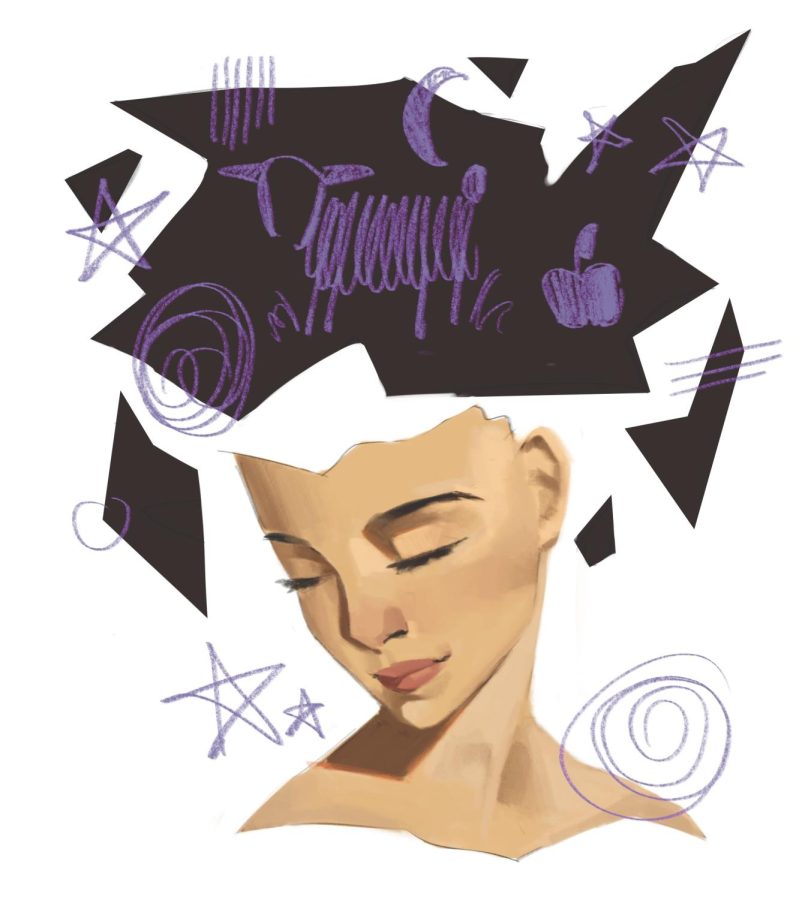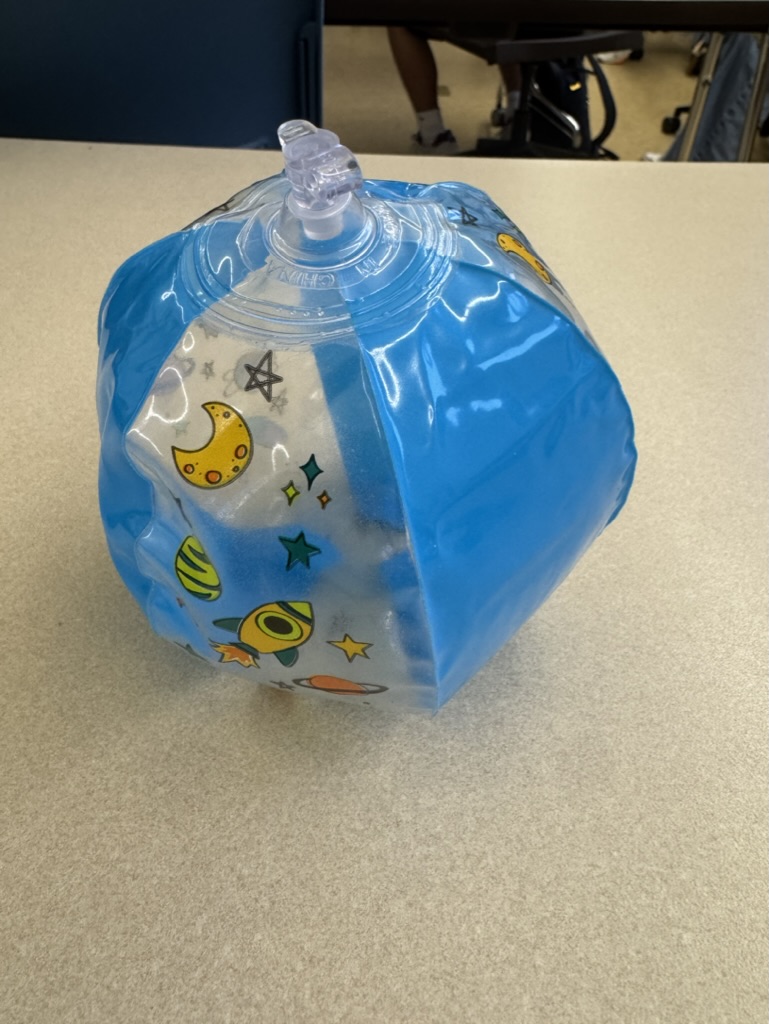Aphantasia reinvents creativity, imagery
July 11, 2023
No matter how hard I close my eyes, if you asked me to imagine an apple, all I would be able to see is the static of a TV screen. As a kid, I thought counting sheep was just a metaphor because, climbing into bed each night, I could only count to 100 in the darkness. Although I know what sheep look like, I cannot picture one in my head to this day.
My condition, which affects around 2% to 5% of the world population, was named aphantasia in 2015, based on Aristotle’s term for the mind’s eye –– phantasia. Variations in the ability to conjure images, sounds or feelings from imagination were first identified by British psychologist Francis Galton in 1880, but were not further investigated until 2005 by Adam Zeman, Honorary Professor of Neurology at University of Exeter and Sergio Della Sala, Professor of Human Cognitive Neuroscience at University of Edinburgh.
While aphantasia only impacts a small population, Della Sala said the ability to produce mental images is a spectrum.
“Aphantasia is a variation of normality, such as height,” Della Sala said. “At one extreme are people with very limited visual imagery, (and) at the other extreme are people whose visual imagery is extremely rich, a condition we labeled as hyperphantasia.”
Della Sala said multiple regions in the brain are involved in mental imagery, and the combined activation of those regions allow people to produce images in their mind. Aphantasia is likely due to a lack of images, not decreased introspection.
“Visual imagery needs the interaction of several areas of the brain including the visual areas located in the back but also areas sitting in the parietal lobe and frontal lobe,” Della Sala said. “The orchestrated activity of all these areas together allows us to retrieve images from our stored knowledge and see and reshape them.”
These areas include the parahippocampal area, which is active when remembering places or scenes, the lateral occipital, which is active when remembering objects and the fusiform face area, which is active when remembering faces.
Emma Megla, a cognitive psychology PhD student at the University of Chicago said for people with aphantasia, certain brain regions may not function simultaneously.
“For those with normal imagery, there are functional connections in the brain,” Megla said. “If one area is active, another area is also activated, forming connections between memory regions and visual regions. Those with aphantasia might not have these fluctuations.”
From a study conducted by Joel Pearson, an imagery researcher at the University of New South Wales, measuring skin conductance levels, Zeman from the University of Exeter identified that due to the lack of simultaneous fluctuations in different brain regions, those with aphantasia are unable to produce voluntary visual imagery.
The skin conductance levels, which refer to the electrical properties of the skin when producing sweat, work to find the presence of a physiological fear response every time a change in levels occurs –– yet subjects showed unusual results.
“When asked to read a series of scary descriptions, such as a swimmer’s view of an approaching shark, which would evoke vivid imagery in most of us, people with aphantasia failed to show the marked change in skin conductance observed in control participants without aphantasia,” Zeman said. “This difference was not because of an overall reduction in emotion as the aphantasic participants showed a normal reaction to photos of scary scenes.”
Therefore, when storing information, Megla said people with aphantasia are less reliant on their episodic memory system, which contains visual memories.
“They rely more on their semantic memory system, which contains general knowledge, verbal labels and your understanding of categories,” Megla said. “They might even have an enhanced semantic memory to make up for their visual impairment.”
Della Sala said people with aphantasia experience less vivid emotions when recalling memories because of their reliance on the semantic memory system to store information.
“Their ability to relive autobiographical events can be less efficient (than people without aphantasia) because mental imagery seems to be necessary for a strong sense of reliving one’s own experiences,” Della Sala said. “High vividness during visual imagery reminiscence elicits stronger emotional reactions.”
Megla said that although people with aphantasia are able to recognize imagery, their lack of visual remembrance means they are unable to recall those same images from memory. In a study by Wilma Bainbridge at the University of Chicago, when participants with aphantasia were shown a photograph for 10 seconds and asked to draw it from memory, they remembered fewer objects than those without aphantasia. However, when asked to identify the image from a selection, they did as well as the control group.
“They use less color, they remember less objects from an image and they tend to use more words,” Megla said. “They can’t remember the visual details of the objects, so they have these labels for what was in the image, but we find that they have good spatial memory.”
Not only does aphantasia affect visual imagery, but Zeman said that those with the condition may also experience impairments in other senses. While people without aphantasia may have a “voice” in their head or are capable of imagining scents, many with the multisensory condition are unable to experience the same phenomena.
“(Most people) can hear the sound of distant thunder, feel the touch of velvet or imagine running for a bus by engaging auditory, tactile and motor imagery,” Zeman said. “Half of (our respondents with aphantasia) lacked imagery in all sense modalities.”
While many of the effects of aphantasia seem impairing, Della Sala said the multisensory condition is another way of experiencing and learning, since most people with aphantasia do not even realize they have it until later in life.
“People with aphantasia perform tasks requiring visual imagery by using alternative non-visual strategies,” Della Sala said. “They can rely on verbal coding to get by in our everyday life even with the absence of an efficient visual imagery system.”
Aphantasia, like many other invisible conditions, has not stopped those affected by it from pursuing activities or careers. In fact, they still find ways to thrive in creative environments that require imaginative thinking and thought processes, such as Co-Founder of Pixar Ed Catmull and Glen Keane, an Oscar winner and character animator at Walt Disney Animation Studios.
While it might take me longer to find a trigonometry ratio since I cannot rotate the triangle in my head, I do not see my condition as a disability. Rather, I am lucky to say that I will never have a song stuck in my head for more than five seconds and each person, whether or not they have a condition, can discover their own method of efficiently completing tasks –– mine just happens to not involve picturing objects in my mind.







